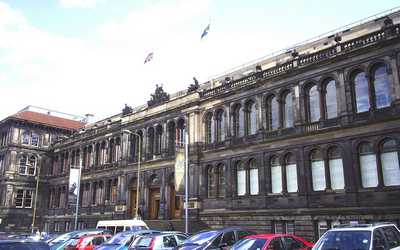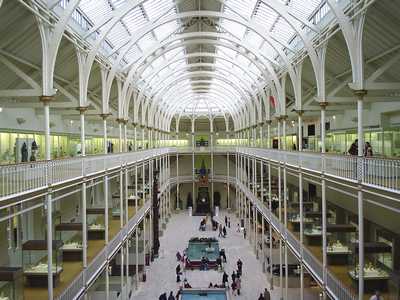I made my first visit to Chamber street about 30 years ago with a group of friends and loved the look of the building. The Museum was constructed between 1861 and 1888 and part of it opened in 1866. It was designed by Captain Francis Fowles of the Royal Engineers who also designed the Royal Albert Hall in London. The building is in the style of Venetian Renaissance with the large cast iron Grand Gallery very similar to Crystal Palace
 |
| The main entrance |
Several years ago June and I were at a fund raising dinner in the Grand Gallery hosted by the Princess Royal Princess Anne, to raise money for Carers in Scotland. When the Royal party entered they were piped in by a troop of military pipers who were in the upper gallery, it sounded fantastic.
 |
| The interior of the Grand Gallery when they had the fish ponds |

 The lamp is made from Spelter and has a Bronzed finish, to the back edge of the figure is the casting mark and a signature T Cartier. Thomas Francois Cartier French 1879-1943 was from Marseilles in France and he specialized in animal figures made from bronze and spelter.
The lamp is made from Spelter and has a Bronzed finish, to the back edge of the figure is the casting mark and a signature T Cartier. Thomas Francois Cartier French 1879-1943 was from Marseilles in France and he specialized in animal figures made from bronze and spelter. The light has an electric lamp holder under the glass shade and is in working condition, it could need rewiring.
The light has an electric lamp holder under the glass shade and is in working condition, it could need rewiring.










































.jpg)